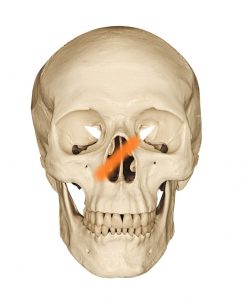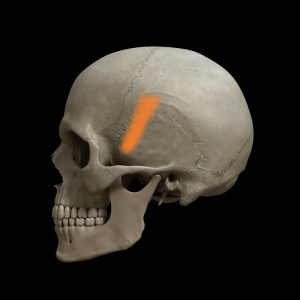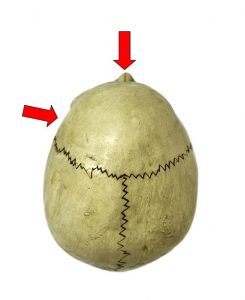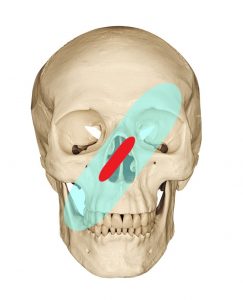Start a criminal justice degree at American Military University. |
Editor’s Note: This is the fifth article in a series reviewing and analyzing the facts and evidence related to the murder of Rebekah Gould. Read the first article to learn about the facts of the case, forensic evidence, and the means, motive, and opportunity of the killer. Read the second article for more analysis about the murder weapon, the crime scene, and location where Rebekah’s body was found. Read the third article for new revelations and information discovered by the author during her visit to the area where Rebekah was murdered. Read the fourth article analyzing new evidence to help identify her killer. Additional articles in this series are listed at the end.
By Jennifer Bucholtz, Faculty Member, Criminal Justice and Forensic Science at American Military University
One of the most challenging aspects in solving the murder of 22-year-old Rebekah Gould is the inconclusive nature of her autopsy report. As discussed in an earlier article, Rebekah’s body decomposed quickly due to being exposed to the elements for six to seven days in the high Arkansas temperatures in September of 2004. As a result, it was difficult for the medical examiner to conclusively identify all of her potential injuries and provide definitive information about them.
During my recent trip to Arkansas, I was provided a copy of the original written autopsy report. It’s important to note that this copy did not include any photographs or x-rays of Rebekah’s injuries, just a written description of the findings.
While I spent a year as a death investigator intern at the Office of the Chief Medical Examiner in New York City, I do not consider myself an expert in analyzing complex autopsy reports. Therefore, I consulted a good friend of mine, Carlie Doebereiner, who spent many years as a firefighter and paramedic and currently works as a Registered Nurse (RN). She has an immense amount of first-hand experience and education treating trauma victims in Level 1 Trauma Centers around the country. She is board certified in both emergency medicine and trauma nursing.
Carlie assisted me in dissecting Rebekah’s autopsy report and interpreting the information included in it. We realize that even logical deductions can be refuted in some manner, but the following discusses the most likely conclusions about Rebekah’s injuries and death.
Evaluating Rebekah’s Injuries
Did Rebekah Die from One Blow or Two?
There has been much speculation about how many times Rebekah was struck in the head. The injuries described in the autopsy report strongly suggest she was hit two separate times. This is because she had two distinct injuries on separate areas of her skull: Her nose was broken in multiple places and there were at least five fracture lines on the left side of her head.
The key to knowing these were two separate injuries is that they do not connect to each other. If they were the result of just one blow, fractures or damage to the bones between the nose and left side of her head, such as to the left eye socket or cheekbone, would be expected. No such damage to any skeletal structure between the two areas of injury was noted in the autopsy report.
Which Blow Came First?
Without access to the investigative file including photos and information about the crime scene, I can’t say decisively whether Rebekah was first hit in the nose or on the side of the head. Either blow would have immediately stunned her. However, it’s much more likely she took the hit to the nose first. If she were hit on the side of the head first, her head and upper body probably would have moved towards her right. This would have left her face in an awkward position for the killer to deliver a second blow to the nose, especially since that blow appears to have come from directly in front of her.
It’s much more likely that Rebekah was first hit in the nose causing her to, at a minimum, instinctively bring her hands to her face and turn away from her attacker, leaving the side of her head exposed for a second blow. After being hit in the nose, Rebekah may have immediately experienced a total inability to breathe through her nose due to obstruction by blood or pieces of bone. While not a fatal injury, broken noses tend to bleed a lot. There is a good chance she lost consciousness after she was struck the second time on the left side of her head.
The Angle of the Blows
Carlie sketched out the angles of the two blows Rebekah received, based on the descriptions in the autopsy report. There are two angles that are important when considering her injuries: (1) the direction from which the two blows struck her and (2) the angle from one end to the other of each injury.
The blow to her nasal structures appears to have come directly from her front. This angle of injury sits at approximately 75 degrees from horizontal, downward to the left, when looking at her face straight on (see image 1). This suggests her killer was right-handed and swung the weapon at that 75-degree angle while standing in front and slightly to Rebekah’s right. How far to her right is contingent on the length of the weapon used and the length of the killer’s arm(s).
It is harder to decipher the angle at which the blow to the left side of her head was delivered, due to incomplete descriptions in the autopsy report and without the photographs and x-rays of Rebekah’s skull. It does appear that this injury (see image 2) is consistent with the one to her nose, as it has approximately the same downward angle from back to front.
Assuming our deduction that the nose strike came first is correct, the directions of the injuries support the conclusion that Rebekah’s head moved after that first blow, but the killer did not. This also lends credibility to the premise that Rebekah was hit two times instead of one (see Image 3; skull from above) as there is no object or weapon we could think of that would deliver the two injuries simultaneously.
Image 3 provides the most accurate representation possible of the direction from which each blow was delivered based on the description in the autopsy.
Lack of Defensive Wounds
The autopsy report states that there were no visible defensive wounds on Rebekah’s body. Although the advanced decomposition of her body prevents us from knowing for sure whether she tried to defend herself, there were no bone bruises or internal injuries that indicate she raised her arms against a swinging object. This suggests the killer struck quickly, giving Rebekah no time to react.
This, in turn, means it is likely the killer used only one arm to deliver the blows. If he had used both arms to swing the murder weapon, it would have taken him a second or two longer to set up the swing, which would have provided Rebekah forewarning of the impending blow and allowed her to react by putting her arms up to protect her head. Furthermore, a swing with two hands probably would have resulted in more horizontal injuries.
Without knowing the length and weight of the weapon or the strength and hand-eye coordination of the killer, it is impossible to entirely dismiss the possibility that he used both arms to swing. However, the evidence suggests it is most likely that Rebekah’s killer delivered two very quick blows, in succession, with just his right hand. It would account for her lack of defensive wounds and the approximate 75-degree angle of her injuries.
Was Rebekah Asleep or Awake When She Was Attacked?
It has been postulated that Rebekah’s killer may have struck and killed her while she was sleeping. Although it’s possible the blow to the left side of her head was delivered while she was lying on her right side, it would have been nearly impossible to hit her nose at the 75-degree angle while she was in that position. Therefore, it follows that she was probably up and awake when she encountered her killer.
There’s a very good chance that Rebekah was near the bed when she was hit the second time. There are two reasons for this conclusion: (1) that is where the preponderance of her blood was reported to have been found and (2) there were no reported injuries to the right side of her skull. If the downward (right) side of her head had been against the floor when she was struck on her left side, she likely would have suffered damage to right side of her skull, due to it being flush against a hard surface. Because there were no such injuries, she was probably either in an upright position when struck on her left side or the right side of her head was cushioned by something fairly soft, like the mattress.
Could Rebekah’s Death Have Been an Accident?
There’s minimal chance that Rebekah’s death was the result of an accident. The 75-degree angle seen in both of her injuries is unique and, because there are no injuries to her eye sockets, cheek bones, jaw, or teeth, it’s doubtful she was pushed or fell onto a solid surface. Additionally, there’s a good chance she would have fractured her arm(s) or wrist(s) from trying to break her fall, or her neck if she was unable to brace herself while falling.
A fall onto concrete or into the solid edge of a table, for example, would be consistent with the severity of her injuries, but not the angles of them. And, on the off chance a fall caused one of the head injuries, it could not have caused both. This indicates human interference and intent for at least one of the blows she sustained.
The Murder Weapon: What Object Was Used to Deliver the Blows?
Without evidence from the investigative file or a confession from the killer, we cannot know for sure what the murder weapon was. The damage to her skull is consistent with some styles of piano legs, but it’s also consistent with several other linear, solid objects such as a baseball bat, glass bottle, tire iron, or even a towel rack.
The angle and placement of the injuries on Rebekah’s nose and skull provide clues to the shape of the murder weapon. The object used was consistent with having a narrow surface area. This could indicate a cylindrical-shaped weapon (such as a baseball bat), as only a narrow portion of that type of object would have made contact with her nose and skull. A flat and wide weapon, such as a two-by-four, would have caused a very different, more widespread injury pattern. An object with a small concentrated surface area at the end of it, such as a hammer, would have resulted in more distinctly shaped injuries and probable depression (indentation) of the skull.
It is also probable that it was the end/tip of the object that made contact with Rebekah’s upper left nasal structure. Had the middle of the object struck her there, it is expected she would have suffered injuries to her left eye socket and/or frontal bones of her forehead, due to the additional length of the object coming into contact with those areas. Image 4 depicts the actual area of injury (in red) and the assumed additional areas of injury (in blue) had the murder weapon been wider/longer and/or if Rebekah had been hit with the middle of the object. This information points to a shorter object that is easy to hold and swing with one hand, though it does not exclude a longer one.
It’s unlikely that the blow to Rebekah’s nose was delivered with a fist. Though there is a slight possibility this could have happened, the only scenario we could come up with is if the killer straddled Rebekah and punched her in the nose and side of the head. However, it’s unlikely a person would have enough strength to deliver the amount of force necessary to cause the injuries she sustained. The killer would certainly have sustained some degree of damage to his right hand and knuckles such as swelling, bruising, broken capillaries, or even a broken hand. There is no indication that law enforcement found hand injuries on any persons of interest.
Deciphering the Specific Cause of Death
The autopsy report states that the cause of death was “blunt force injuries of head.” This is true, though not very specific. Carlie and I made an effort to determine which internal system ultimately failed and led to Rebekah’s death.
The injury to the nasal structure certainly would have led to blood loss, but not enough to result in death. It is probable that a secondary effect from the blow to the side of her skull led to her death. Though I originally assumed her middle meningeal artery was severed or had burst—leading to extensive external bleeding—I learned that scenario was unlikely.
If the skull fractures had been displaced—meaning they created a gap, hole, or missing area of bone—a great deal of external blood loss may have occurred from the middle meningeal artery. However, based on the autopsy descriptions, this was not the case. It is more likely the middle meningeal artery was damaged or ruptured internally, resulting in the blood being contained within the skull. The skull, unlike tissue, is not able to expand. However, the brain is composed of tissue and is compressible. As the space inside the skull fills and blood continues to pump out of the ruptured vessel, the increasing amount of blood begins to place pressure on the brain. This compresses the brain and forces it into an unnatural shape and space. If the pressure is not relieved, the brain areas that control life functions (such as breathing and heart function) are affected. Without medical treatment, these functions eventually cease.
Rebekah probably did not die immediately after being hit. Neither of her injuries were life-threatening with prompt medical treatment. It’s very possible she continued to live for several hours after her killer struck her in the head. Even more disturbing is that she may have still been alive when she was transported and left at the disposal site where her body was found a week later. If this was the case, there’s a good chance the killer had no idea she was still alive as she would have been unconscious and her vital signs may have been unrecognizable to anyone lacking medical training.
Other Autopsy Observations Worthy of Mention
Fluid in Rebekah’s Lung
The autopsy report stated that there were five milliliters of a reddish-black fluid in Rebekah’s left lung. This fluid was blood and the reason it was partly black is because of the long passage of time between death and when her body was found. Over time, as blood coagulates and ages, it takes on a much darker hue.
There are two potential reasons why blood was in Rebekah’s lung: (1) blood from her nose injury drained through the nasal cavity, down her airway, and into her lung and/or (2) she aspirated blood before she died. Aspiration refers to the breathing in of foreign material such as food, saliva, vomit, or liquid into the airway. In this case, the foreign material was blood. Incidentally, it is not unusual to aspirate into only one lung.
Time of Death Using Forensic Entomology
Forensic entomology refers to the study of insects on decomposed bodies during a death investigation. This discipline is often relevant to solving murder cases because it assists in determining an approximate time period of death. An independent review of Rebekah’s autopsy, arranged for by one of her family members a few years ago, estimated the average age of maggots found on her body to be 6.25 days. This matches up with her death occurring on Monday, September 20, 2004. It also negates any theory that Rebekah’s body was stored in a car trunk or other enclosed area prior to being moved to the dump site. If this had been the case, the size of the blow flies and maggots would be much smaller because it would have taken them longer to detect and access her body.
Toxicology
The autopsy report noted that Rebekah’s toxicology report came back negative for drugs and only a trace amount of alcohol, which was a by-product of the decomposition process of her body. However, there was a seven-day gap between her death and when her pleural fluid (that found in/around the lungs) were tested for drugs. Because of the long time period, the results may have been unreliable and inaccurate. The takeaway is that we cannot know for sure if there were any drugs in her system or an atypical amount of any drug. Even if we had a toxicology result that was 100 percent accurate, it would not affect the manner of death (homicide).
No Evidence of Sexual Assault
Though the medical examiner could not conclusively determine if Rebekah was sexually assaulted, it is unlikely that she was. One reason for this is because she was found with her underwear on. It’s doubtful someone who raped and killed her would have taken the time to put her underwear back on. Also, it is very difficult to properly put any article of clothing on a dead body. Despite the fact that it is possible to commit rape without removing the victim’s underwear, and that advanced decomposition prevented a complete sexual assault exam, there is a good chance Rebekah’s underwear would have preserved any foreign DNA indicative of rape. There is no indication any foreign forensic evidence (semen and/or pubic hairs) was found on that article of clothing.
Concluding Thoughts
The evaluation of the autopsy report, in conjunction with other facts of the case, supports the premise that Rebekah knew her killer. Because we can probably eliminate the theory that she was sleeping when killed, she likely interacted with her killer wearing just the t-shirt and underwear she was found in. If she heard or saw a stranger or someone she was not close with entering the house, it makes sense that she would have scrambled to put a pair of pants on. If her killer took her by surprise, she may not have had this opportunity. But, most likely, her killer was probably someone she trusted and allowed to get close to her while only partially clothed.
As mentioned in the previous article, the actions Rebekah’s killer took after the murder are also indicative of a personal relationship. A stranger with no ties to Casey’s house would not have attempted to clean up or dispose of the body because they would risk being discovered while completing those tasks. There had to be a strong motive to move her body from the crime scene (or move the body at all). It is likely the killer felt leaving the body at the crime scene was even riskier than moving it and that leaving it would point to him as the primary suspect. The killer obviously did not realize that removing a body is more suspicious than leaving it in place.
The conclusion drawn from the autopsy that Rebekah likely suffered two blows to the head is a crucial part of proving the killer’s intent and determines what charges the prosecutor should bring against him. When a victim suffers only one head injury, it could indicate the attacker only meant to harm, not kill. It does not appear this is what happened in Rebekah’s case. Rebekah’s killer made a conscious decision to hit her two separate times in the head. No matter how short the length of time between the blows, the killer could have chosen not to deliver the second hit. Even after the second hit, the killer could have rushed Rebekah to a hospital and she would have likely lived. Neither of these scenarios happened; Rebekah’s killer wanted her dead and ensured her death was the end result. Because of this, he should be charged with homicide.
Now that readers have read my analysis of most of the facts of this case, please email me with any questions. I plan to compile a list of topics and answer questions in an upcoming article in this series. I can be reached at info@icuinvestigations.net.
If readers have any information, no matter how inconsequential they believe it might be, please call the Izard County sheriff’s department at (870) 368-4203 or Arkansas State Police at (800) 553-3820. Tips can also be sent to info@asp.arkansas.gov or info@icuinvestigations.net. Anyone reporting information has the right to remain anonymous.
To learn more about current research into this cold case, read the next articles in this series:
- Q&A: Answering Questions Regarding the Murder of Rebekah Gould
- Geographic Profiling and Psychology Provide Clues About Rebekah Gould’s Killer
- Circumstantial Evidence Could Bring Rebekah Gould’s Killer to Justice
- Using Behavioral Analysis to Narrow Suspects in Rebekah Gould’s Murder
- Arrest Made in 16-Year-Old Murder Case of Rebekah Gould
About the Author: Jennifer Bucholtz is a former U.S. Army Counterintelligence Agent and a decorated veteran of the Iraq and Afghanistan wars. She holds a Bachelor of Science in criminal justice, Master of Arts in criminal justice and Master of Science in forensic sciences. Bucholtz has an extensive background in U.S. military and Department of Defense counterintelligence operations. While on active duty, she served as the Special Agent in Charge for her unit in South Korea and Assistant Special Agent in Charge at stateside duty stations. Bucholtz has also worked for the Arizona Department of Corrections and Office of the Chief Medical Examiner in New York City. She is currently an adjunct faculty member at American Military University and teaches courses in criminal justice and forensic sciences. Additionally, she is a licensed private investigator in Colorado. You can contact her at Jennifer.Bucholtz@mycampus.apus.edu.






Comments are closed.